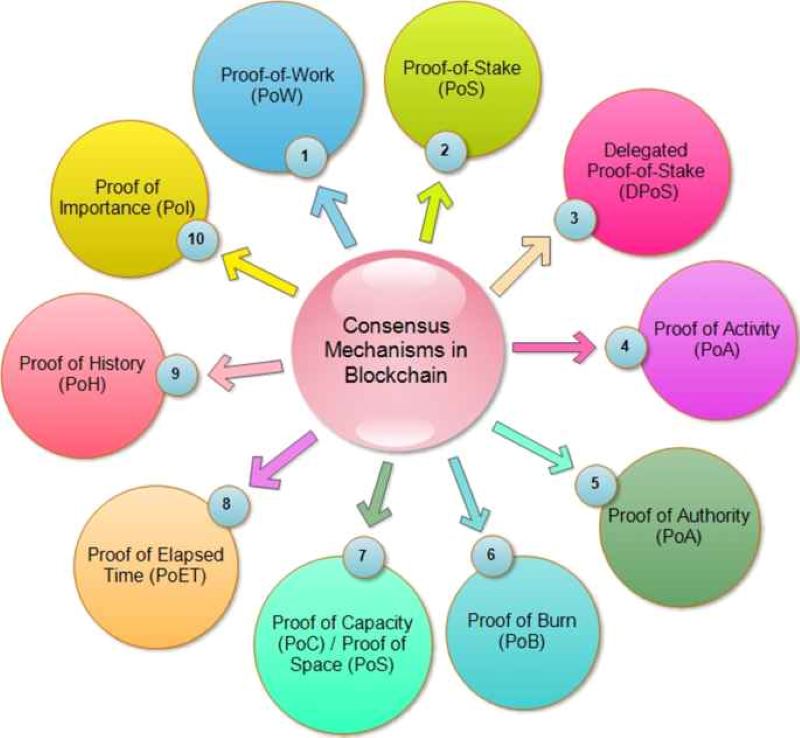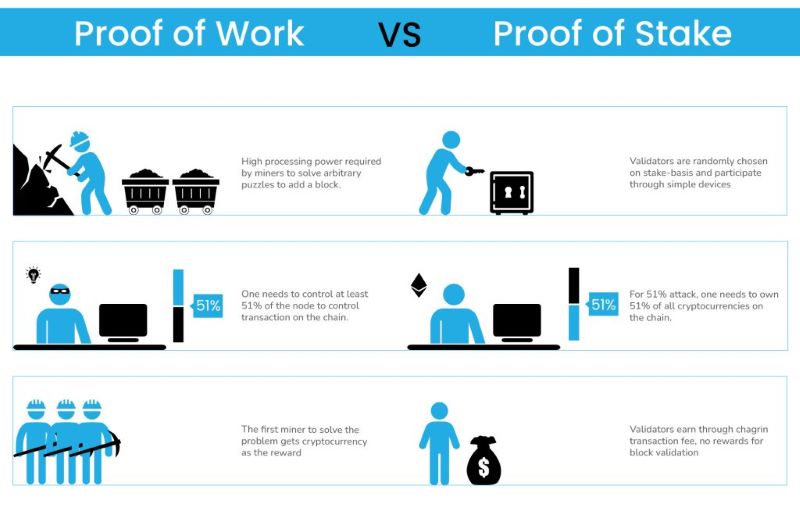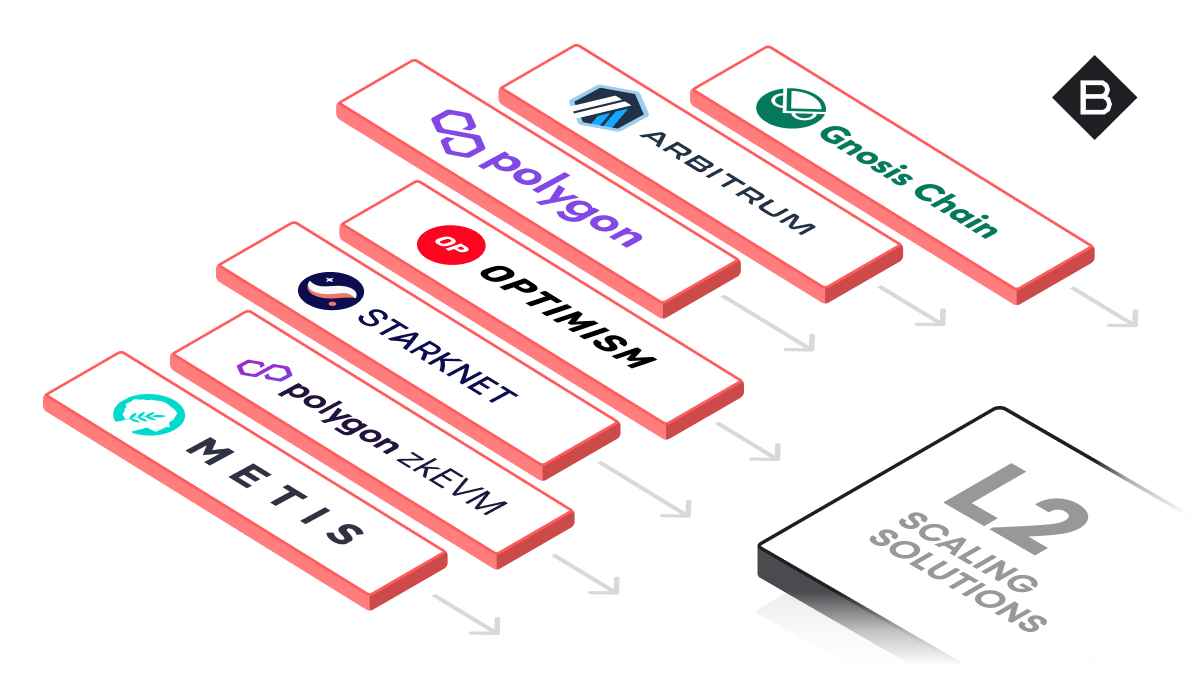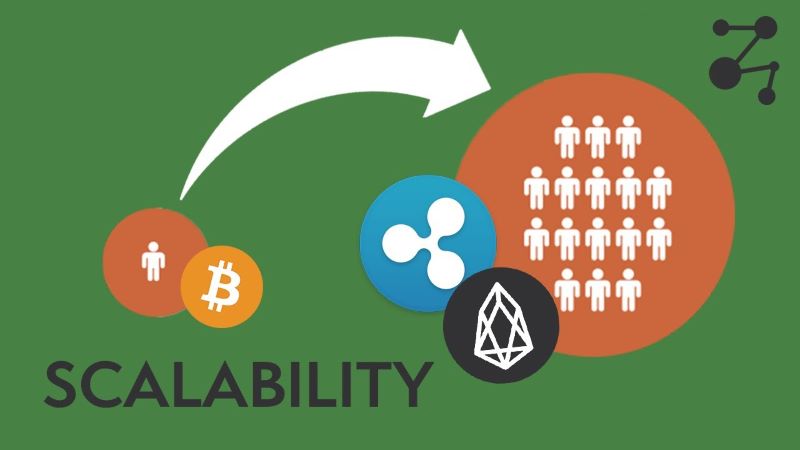Can blockchain scale? This is the burning question at the heart of crypto’s future. As an expert, I’ve seen the tech’s potential, but I’ve also hit the walls of its limits. We need speed, security, and decentralization—yet these goals seem to clash. In this deep dive, we’ll tackle the scalability trilemma, explore consensus mechanisms, and assess innovative Layer 2 solutions. Our journey will reveal if blockchain can truly power our digital world or if it’s bound to stumble under its own growth. So let’s cut to the chase and start unraveling the truth about blockchain scalability.
Understanding Blockchain Scalability Challenges
The Scalability Trilemma: Security, Decentralization, and Speed
In the world of blockchain, we face a big puzzle. We call it the scalability trilemma. This means we must balance three things: security, decentralization, and speed. When one improves, another might fall short.
Think of it like a game. You can have a secure network where trust isn’t an issue. You can also spread control so no single player has all the power. Yet, making things faster can make the game less safe or more central.
Now, why does speed matter? Everyone wants transactions fast and without delay. Like streaming videos without buffering, right? That’s what we want for sending and receiving digital money.
But it’s tough. More speed can mean less safety and more control in fewer hands. This isn’t good for a system that needs trust and fairness.
Current Bottlenecks in Transaction Throughput and Network Congestion
Current blockchain networks have a line at the door. So many people want to use them, but they can’t all get in at once. Imagine a store that can only serve a few customers at a time. That’s blockchain right now. This makes everything slow, and some pay more to get ahead in line.
In blockchain, everyone needs to agree on transactions. This takes time and effort. When too many transactions hit at once, the system jams like traffic during rush hour. Fees go up, people get mad, and some may even leave for another road.
We call these problems bottlenecks. They stop the flow and cause trouble. And fixing them isn’t simple. We can’t just make the blocks bigger to fit more transactions. This can hurt decentralization because it makes it costly to run a full node on the network.
So what can we do? For one, we’re creating special lanes for quick trips. These ideas are called layer 2 solutions. They handle the fast stuff, while the main road, or layer 1, takes on bigger loads.
We are also teaching the blockchain new ways to talk. Sharding breaks data into smaller pieces, which can make things move faster. Think of it as carpooling, where each car only takes a few people instead of one bus with everyone.
We’re also using sidechains. These are like extra lanes that run parallel to the main road. They expand the network and ease the jam.
There’s a lot of work to do still. But day by day, bit by bit, we get closer to a blockchain that can handle everyone. It’s like building a better highway. It takes time, but eventually, it can lead to smooth sailing for all.
In the end, our goal is the same. A blockchain that’s safe, fair, and fast. It’s a tough balance. But if we get it right, it’ll change the game for everyone.
The Evolution of Consensus Mechanisms
Comparing Proof of Work to Proof of Stake
Can blockchain scale? Sure, but it must evolve. Let’s start with the basics. Blockchains run on rules called consensus mechanisms. They are vital. They help keep all the computers in the network in sync. Yet, they differ a lot. Let’s talk about two big ones: Proof of Work (PoW) and Proof of Stake (PoS).
PoW, like in Bitcoin, uses loads of computer energy. Miners solve hard math puzzles to add new blocks. This process takes a lot of power, making it slow and pricey. As a result, Bitcoin can handle about 7 transactions per second. This is not enough for a global system.
Now, let’s compare it to PoS. In PoS, validators own part of the currency. They get chosen to add new blocks, based on the amount they hold. It’s like a raffle where holding more tickets gives you a better chance to win. PoS is quicker and uses less energy. It can do a lot more transactions in the same time.
The Impact of Consensus Protocols on Scalability and Efficiency
How does all this affect scalability? Well, it changes everything. PoW’s slow speed leads to a jam. Think of it like rush hour traffic. Too many cars, not enough road. When the network gets busy, you pay more to get your transaction through.
PoS offers a smarter route. It’s like having a fast pass in traffic. You move quicker with less hassle. This means a lot more transactions go through without waiting.
But it’s not just about speed. It’s about staying fair and safe too. A more scalable blockchain must keep these in balance. Think of the blockchain trilemma. It’s like a triangle with three goals: security, decentralization, and speed. So far, more speed meant less of the other two. But, we’re getting better at finding the middle ground.
Layer 2 solutions, like the Lightning Network, tack on extra layers. These layers handle some transactions off the main blockchain. They only check in with the main chain now and then. This means we can do loads more transactions with less traffic on the main road.
Sharding is another cool trick. It splits the blockchain into bits. Each bit is like a mini blockchain, able to process its own transactions.
We’re also seeing sidechains, which are like extra lanes on our highway. They run alongside the main blockchain. They help by taking on some of the work.
And let’s not forget off-chain scaling. These are ways to do transactions completely away from the main blockchain. It’s like meeting a friend to trade baseball cards. No need for the main blockchain, but still secure.
All these changes are all about making blockchains fast, cheap, and safe to use. They’re key to letting everyone use crypto. Not just tech fans. The future depends on getting this mix right. And guess what? We’re on our way there.
Layer 2 Innovations and Off-Chain Solutions
Exploring the Success of the Lightning Network and State Channels
When we talk about making blockchains work faster, we can’t skip the Lightning Network and state channels. They’re both ways to let folks transact super-fast and at low cost. So how do they do it? They move some of the work off the main blockchain.
When you think about the Lightning Network, imagine two people, Alice and Bob. They put some Bitcoin into a shared wallet—that’s their Lightning Network channel. Now, they can send Bitcoin back and forth without waiting for miners or paying hefty fees. Only when they’re done transacting, the final result goes onto the blockchain. It’s a way clever hack for Bitcoin scaling issues.
State channels work in a similar vein. They let users interact in a private channel, away from the main blockchain. This means lots of transactions or even games can happen quick, without crowding the network. We find Lightning Network and state channels mostly in Ethereum scalability conversations. They’re key parts of their toolkit.
The Potential of Sidechains and Sharding for Expanding Capacity
If we want to expand blockchain capacity, sidechains and sharding hold big promise. Sidechains are like having a mini-blockchain linked to the main one. They can have their own rules, and they’ll only sync up with the main chain at certain points. This can help a lot with transaction throughput, because it’s like opening extra lanes on a highway.
Then there’s sharding. Picture breaking a big blockchain into smaller ones, called shards. Each shard handles only a slice of the network’s transactions. It’s a bit like a team splitting up tasks so they can get stuff done faster. This method is a big part of the push for more scalability in blockchain technology.
These sidechains for blockchain expansion and sharding in blockchain are still growing. Folks are working hard to make sure they’re safe, so we don’t lose that balance between scalability, security, and decentralization. It’s a tricky challenge, called the scalability trilemma, but the potential payoff is huge!
Every one of these Layer 2 solutions helps the blockchain deal with more stuff without bogging down or charging big fees. As we find the best ways to use these tools, we’re moving closer to mainstream blockchain adoption. That’s when businesses and everyday people start using blockchain for all sorts of things.
All these steps to speed up blockchains are sort of like making a busy highway wider, with special express lanes, so everyone can keep zooming along. The aim is to make blockchain work for a lot more people, doing a lot more things, all without creating traffic jams. It’s not just about making it work; it’s about making it work well for everybody. That’s how we might see everyone from big companies to your neighbor using this tech someday soon.
The Future Directions for Scalable Blockchain Systems
Interoperability and Cross-Chain Communication as Scalability Enablers
In the world of crypto, “interoperability” means that different blockchain systems can talk to each other. It’s just like making new friends on the playground, but for blockchains. Cross-chain communication is like passing notes between these friends. It helps solve a big problem – how to grow and handle more people wanting to use blockchain.
Now, you might be asking, can blockchain really handle all these people? Yes, by making friends and working together. When blockchains talk to each other, they share the load. This is key for blockchain to grow big and strong.
Imagine blockchains are like roads. If you only have one road for all cars, you get a traffic jam. But if roads (blockchains) connect and cars (transactions) can switch lanes, traffic moves better! Now, we have new ways to make these connections happen.
Layer 2 solutions like the Lightning Network for Bitcoin zip transactions off the main road. It’s like a fast lane just for certain cars. This makes things quicker without making the main road (Bitcoin’s blockchain) wider. See, some people argue about making each block in the blockchain bigger (the block size debate) to fit more transactions. But this can cause its own issues.
Ethereum is getting better at scaling too. It’s building things like state channels and the Raiden Network. Think of these like private roads for speedy trips. Ethereum also works on sharding, where it breaks down the database to spread the load.
The goal is to keep the blockchain village happy as it grows. Everyone wants to move in because it’s a cool place (mainstream adoption). But if it’s too crowded or slow, people get upset. So we make sure the blockchain can welcome more friends without losing what makes it special (like being safe and everyone getting a fair say).
Preparing for Mainstream Adoption: Scaling Blockchain for Enterprises
Big companies (enterprises) are like huge families moving into the blockchain village. They have tons of stuff (transactions and data) and need space (scalability). They won’t move into a place that’s too slow or crammed.
So, how do we prepare for this? First, we have to make sure the blockchain network doesn’t get all clogged up (network congestion). It’s like when too many people try to flush the toilet at the same time. Not good! We can use smart strategies like sharding to split the data into smaller bits. This way, the system doesn’t get overwhelmed.
Fees are another thing to think about. When it gets busy, fees go up. It’s like paying more for a taxi when it’s raining. Enterprises don’t want that surprise cost. We’re working on ways to keep those fees reasonable, even when things get busy.
The big question is: can these solutions work together smoothly (interoperability and scaling)? It’s important because we want all parts of the blockchain to understand each other and work as a team.
Getting this right means the difference between blockchain being our future financial playground or just a neat idea that couldn’t handle the heat. By focusing on making blockchains talk and work together, we’re paving the way for everyone, big and small, to be part of the blockchain fun. Sure, it’s a tricky puzzle, but that’s what makes it exciting!
We dove deep into how blockchains can grow without losing their groove. We kicked off with the big three issues: keeping it safe, open, and fast. These are tough to tackle all at once. Next, we hit the brakes on why your crypto might get stuck, pointing out the gridlock in transactions.
Then we zoomed into the geeky world of consensus. We matched up Proof of Work with Proof of Stake, seeing how they help blockchains buzz without draining the tank. This leads to a smooth ride on the data highway.
We didn’t stop there! Layer 2 tech and other cool tools like Lightning Network give blockchains a turbo boost. They’re like side roads that keep the main lanes clear. Sidechains and sharding? They’re game-changers for packing in more action without a hitch.
Looking ahead, blockchains are getting ready to join forces, making them speak the same language. This is big for business, preparing for a time when everyone, everywhere, can join the blockchain bonanza.
In short, blockchains are on a wild ride to grow big and stay snappy. We’ve got smart folks cooking up new tech so that blockchains can handle the heat and keep their cool. Keep an eye out; the road to blockbuster blockchains is just getting started.
Q&A :
Can blockchain technology be scaled to meet higher demand?
Blockchain’s initial design faces challenges with scalability as each node in the network must process every transaction, leading to potential bottlenecks. However, developers and researchers are constantly working on solutions such as second-layer protocols (like the Lightning Network for Bitcoin) and sharding, which could allow blockchains to scale significantly while still maintaining security and decentralization.
What are the current limitations of blockchain scalability?
Currently, most blockchains have a limited number of transactions they can process per second. This limitation arises from factors like block size, block time, and network protocols. This can lead to slower transaction times and higher fees during peak usage. Solutions like off-chain transactions and improvements in consensus mechanisms are being developed to address these limitations.
How might future advancements improve blockchain scalability?
Innovations like proof-of-stake, state channels, sidechains, and interoperability protocols are in development to tackle the scalability issue. These advancements could enable blockchains to process thousands of transactions per second, rivaling traditional payment networks. As technology evolves, we can expect to see more robust and scalable blockchain infrastructures emerge.
Is it possible for a blockchain to be both scalable and secure?
The blockchain trilemma posits a challenge in achieving scalability, security, and decentralization simultaneously. However, this does not mean it is impossible to strike a balance. Through cutting-edge consensus algorithms, layer two solutions, and cross-chain communication, blockchains aim to provide scalable solutions without compromising on security.
What are some examples of scalable blockchain projects currently in development?
Projects like Ethereum 2.0 with its transition to proof-of-stake, Polkadot with its multi-chain architecture, and Solana with its high throughput capability are examples of scalable blockchain projects. These platforms are being designed to support a high volume of transactions while maintaining the core principles of blockchain technology.





RELATED POSTS
What is a decentralized exchange?
What is a decentralized exchange?...
Unlocking the Mystery: Who is Satoshi Nakamoto Really?
Who is Satoshi Nakamoto? Tracing...
Network3 Airdrop – Potential Profits in the Future
Network3 Airdrop offers potential profit...
Green Cryptocurrency: Is Eco-Friendly Trading the Future?
Discover the importance of green...
Blockchain Revolution: Securing Student Records for the Future
Discover the impact of blockchain...
Examples of blockchain transparency in action: Unveiling Impact
Examples of blockchain transparency in...
Can you mine Dogecoin? – Exploring the Mechanics behind it
Can you mine Dogecoin? This...
Tokenization in Education: Can Blockchain Revolutionize Learning Access?
Tokenization of educational resources with...
Cryptocurrency Unveiled: Unlocking the Mysteries Beyond Blockchain
How is cryptocurrency different from...
Blockchain Breakthrough: How Will Blockchain Impact Different Industries In The Future
How will blockchain reshape industries...
Regulations for Blockchain Technology: Navigating Tomorrow’s Rules
"Understanding future regulations for blockchain...
Interoperable Blockchains: Unpacking Hidden Security Risks
Understanding the security risks in...
Starknet: A Layer-2 scaling solution for Ethereum
Starknet is rapidly gaining traction...
Custodial Wallet Crypto: What’s the Real Deal Behind Your Digital Vault?
"Enhance Crypto Security with Custodial...
Essential Blockchain Technology Example Cases You Should Know
Blockchain technology example is everywhere,...
What is a bull trap? Signs and Strategies to Protect Your Investments
What is a bull trap?...